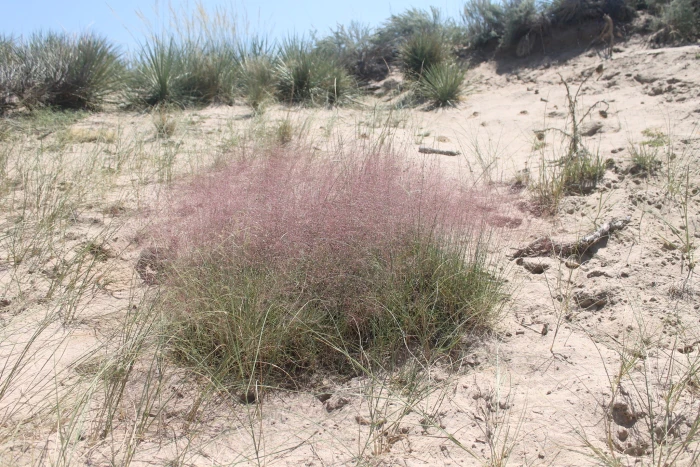Sandhill Muhly
(Muhlenbergia pungens)
Sandhill Muhly (Muhlenbergia pungens)
/
/

Stephen Hornbeck
CC BY 4.0
Image By:
Stephen Hornbeck
Recorded By:
Copyright:
CC BY 4.0
Copyright Notice:
Photo by: Stephen Hornbeck | License Type: CC BY 4.0 | License URL: http://creativecommons.org/licenses/by/4.0/ | Rights Holder: Stephen Hornbeck | Publisher: iNaturalist | Date Created: 2023-08-30T16:07:55-07:00 |

























Estimated Native Range
Climate Requirements for Covington, Kentucky
| This Plant | Your Site | Plant Suitability for Your Location | ||
|---|---|---|---|---|
| • Precipitation | 6" - 78" | 42" | Aquatic | Aquatic |
| • High Temp. | 62°F - 99°F | 88°F | Your summer temperatures are normal for this plant. | Excellent |
| • Low Temp. | -1°F - 36°F | 21°F | Your winter temperatures are normal for this plant | Excellent |
This plant may not grow well at your location - your precipitation is too high.
Summary
Muhlenbergia pungens, commonly known as Sandhill Muhly or Wickiup Grass, is a perennial grass native to arid and semi-arid regions, particularly sandhills, desert grasslands, and open shrublands in western North America. This includes areas such as southwestern South Dakota, Kansas, southern Wyoming, Colorado, Utah, Arizona, New Mexico, and the Texas Panhandle. It typically forms clumps or tussocks up to 2 feet tall and wide, with narrow, stiff, blue-green leaves and delicate, airy seed heads that appear in late summer to fall.
Sandhill Muhly is valued for its ability to stabilize dry, loose soils and control erosion, making it useful for restoration projects and xeriscaping. It is also appreciated for its low water requirements and ability to thrive in poor, sandy soils with full sun exposure. While it has limited agricultural use, it is an important forage plant for wildlife and livestock in its native range. The Hopi of Arizona utilize this grass traditionally to make brushes. In cultivation, it is sometimes used as an ornamental grass in naturalistic plantings and as a ground cover in arid gardens. It is generally disease-free but can suffer from root rot if overwatered or planted in poorly drained soils.CC BY-SA 4.0
Sandhill Muhly is valued for its ability to stabilize dry, loose soils and control erosion, making it useful for restoration projects and xeriscaping. It is also appreciated for its low water requirements and ability to thrive in poor, sandy soils with full sun exposure. While it has limited agricultural use, it is an important forage plant for wildlife and livestock in its native range. The Hopi of Arizona utilize this grass traditionally to make brushes. In cultivation, it is sometimes used as an ornamental grass in naturalistic plantings and as a ground cover in arid gardens. It is generally disease-free but can suffer from root rot if overwatered or planted in poorly drained soils.CC BY-SA 4.0
Plant Description
- Plant Type: Grass
- Height: 1-2 feet
- Width: 1-2 feet
- Growth Rate: Moderate
- Flower Color: N/A
- Flowering Season: Summer, Fall
- Leaf Retention: Deciduous
Growth Requirements
- Sun: Full Sun, Part Shade
- Water: Low
- Drainage: Fast, Medium
Common Uses
Drought Tolerant, Erosion Control, Low Maintenance
Natural Habitat
Native to arid and semi-arid regions, particularly sandhills, desert grasslands, and open shrublands in western North America
Other Names
Common Names: Sand Muhly, Scratchgrass, Deergrass
Scientific Names: Muhlenbergia pungens, Podosemum pungens
GBIF Accepted Name: Muhlenbergia pungens